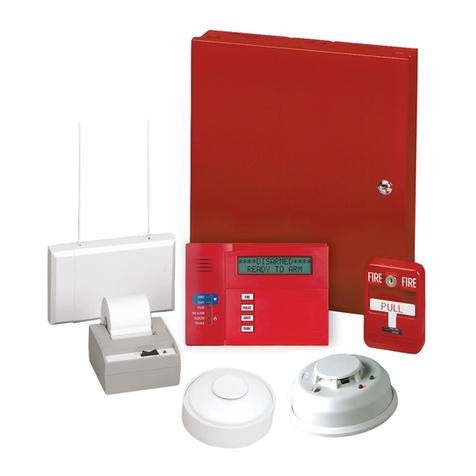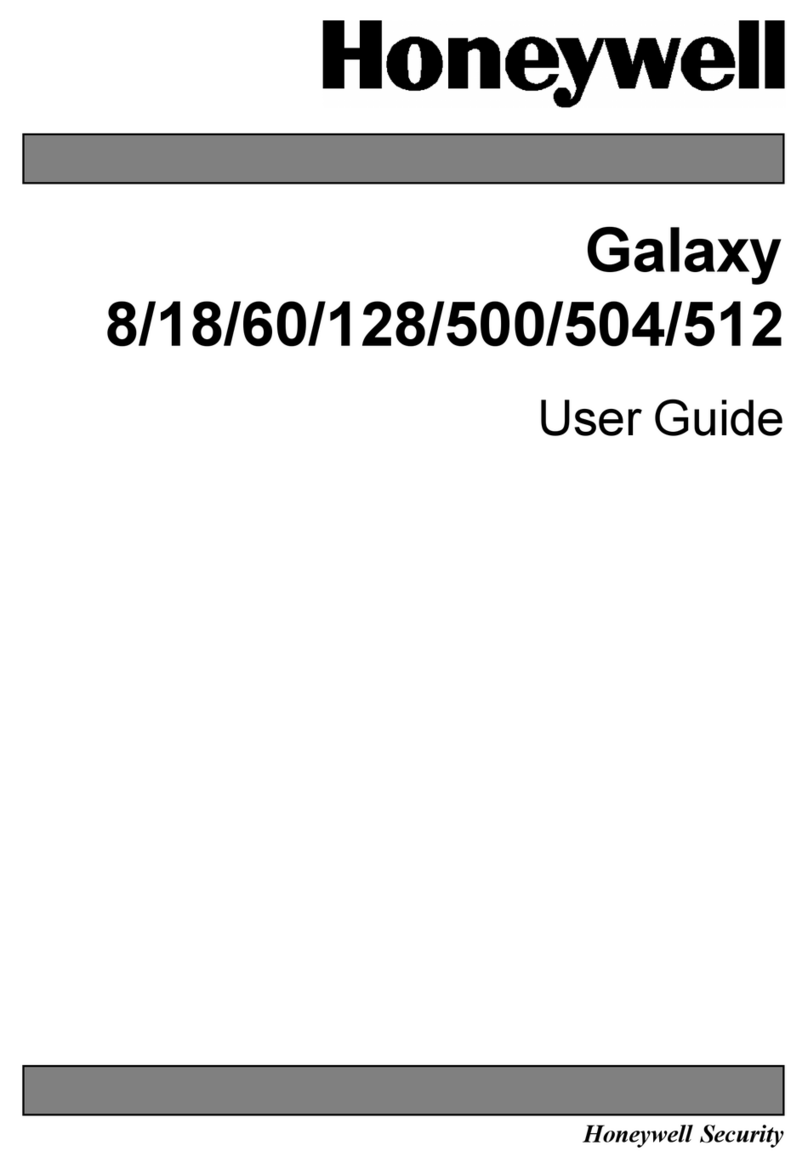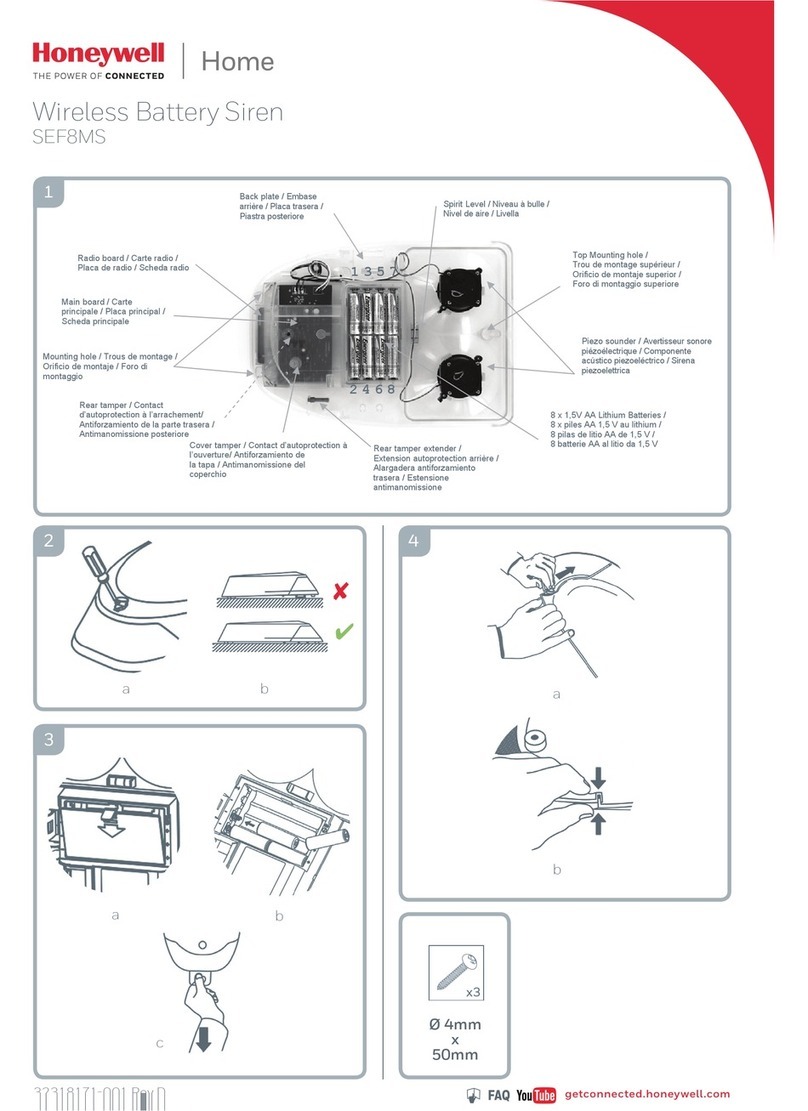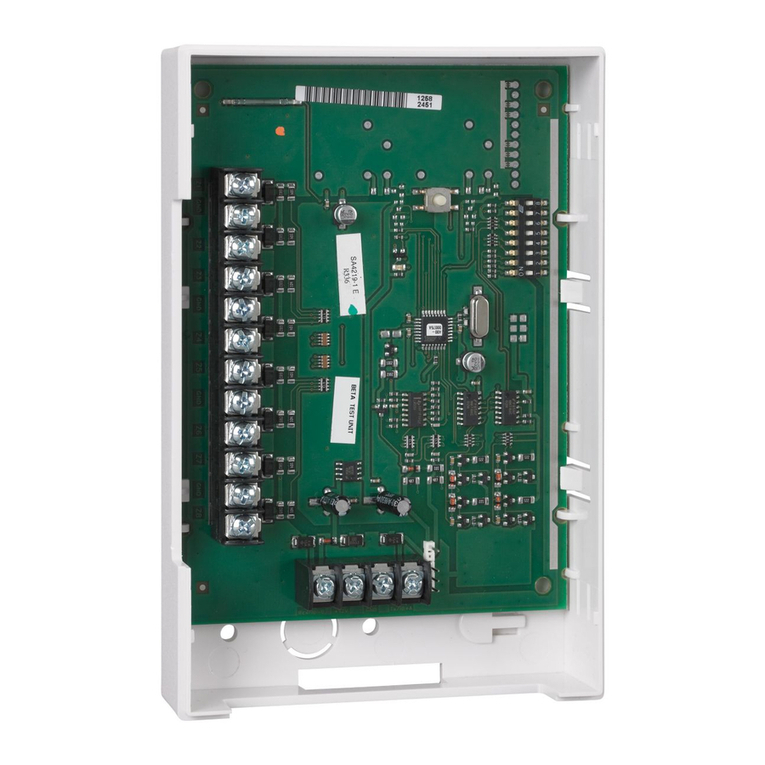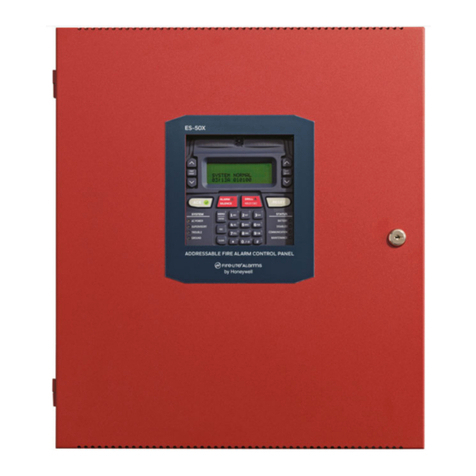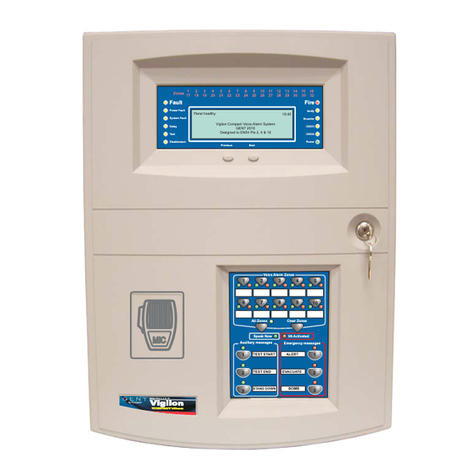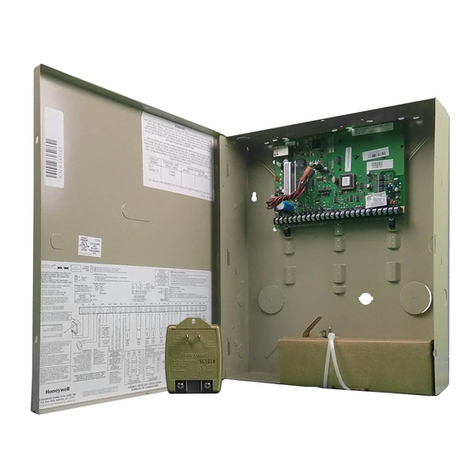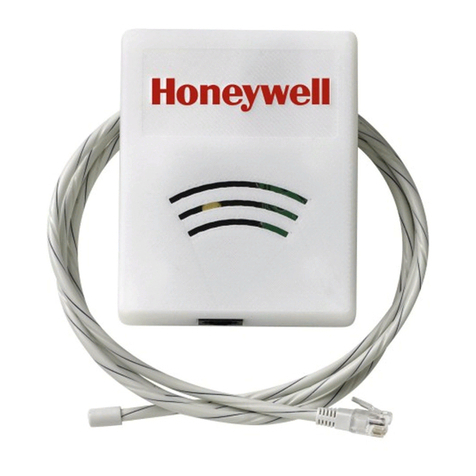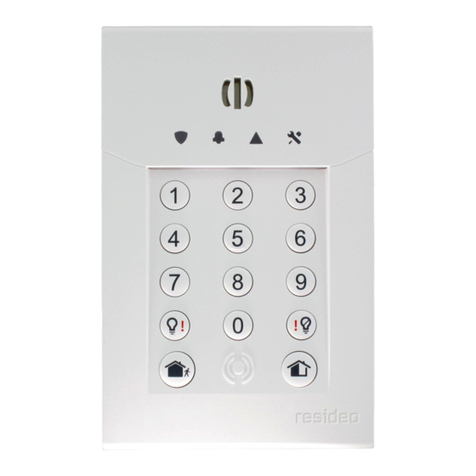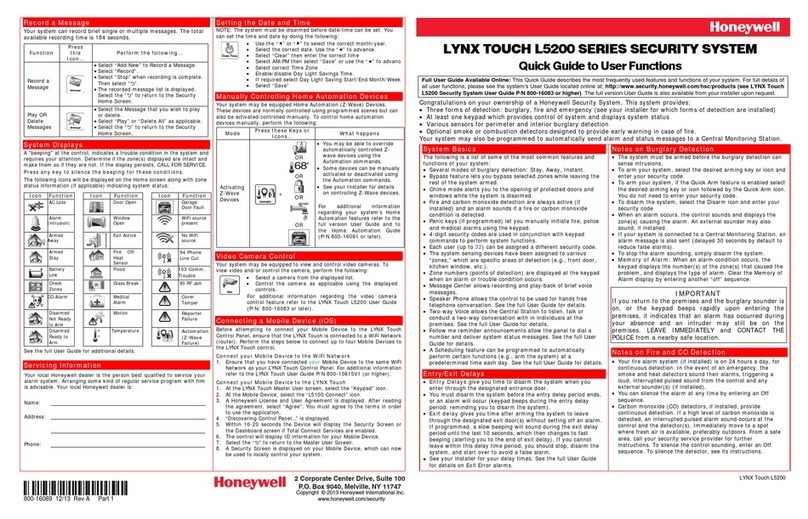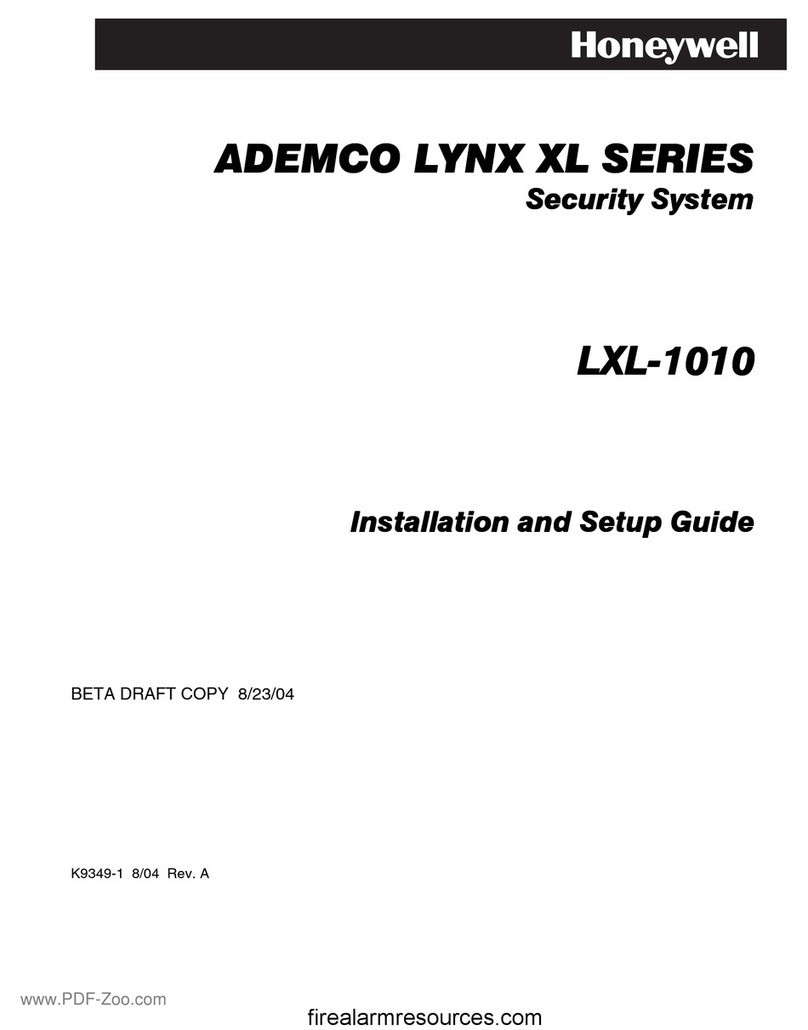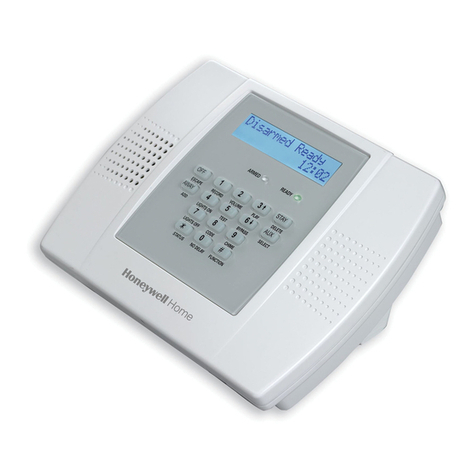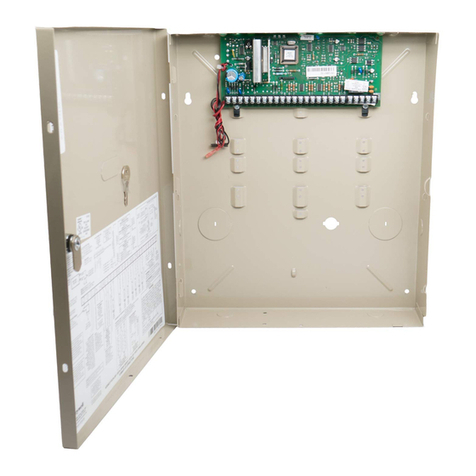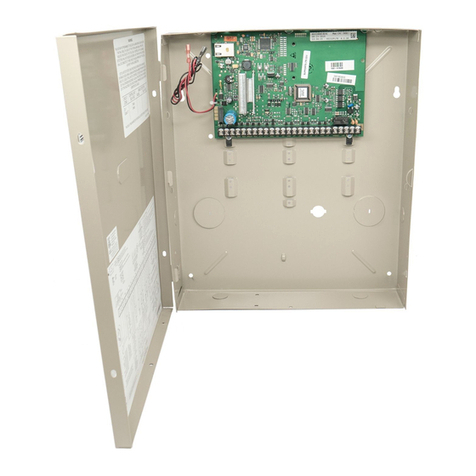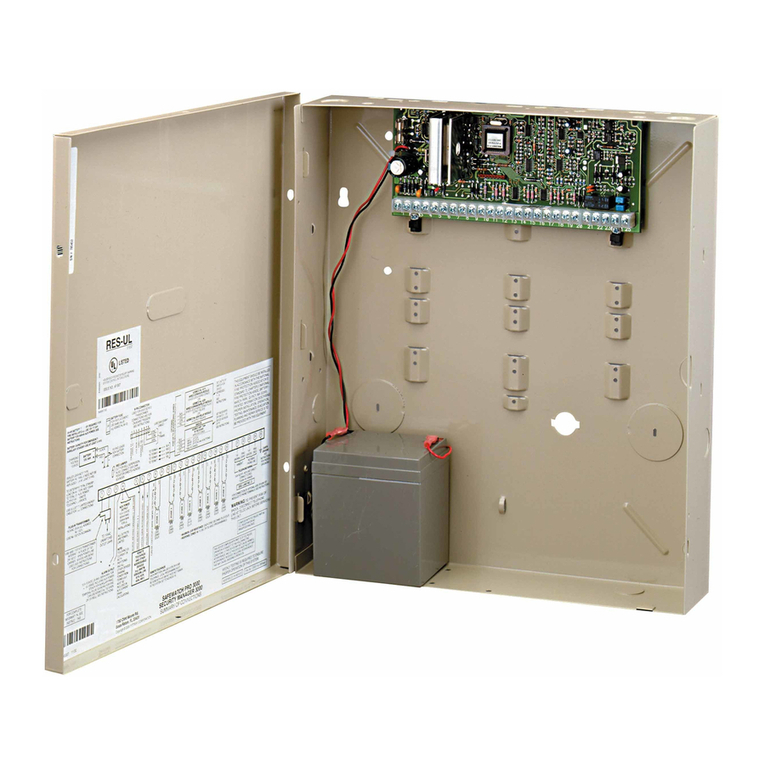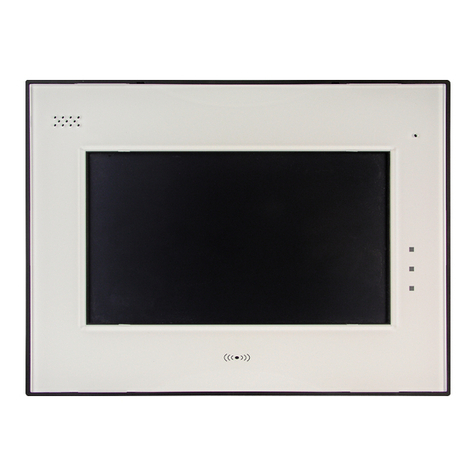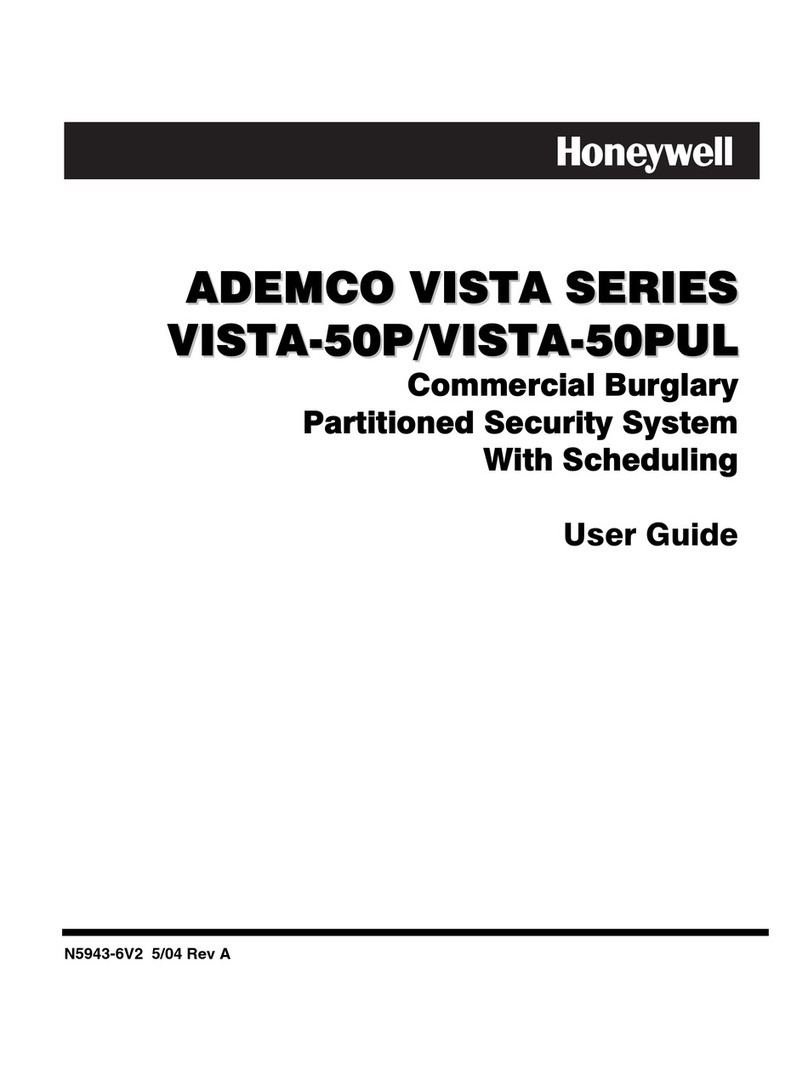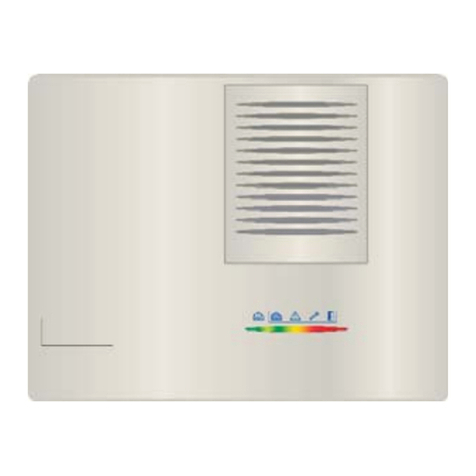
ÊN8583V3uŠ
N8583V3 7/05 Rev. A
1. Surface mount the unit’s plastic base to a wall or ceiling, or
mount the plastic base to either a 4” junction box or 3-1/4-
octagon box.
NOTE: The anti-twist mounting hole is for use when
installing the device directly to wallboard to prevent the
base from being twisted off when servicing the device.
2. Install the detector assembly to the base by aligning the
detector assembly index tabs to the index tab recesses in
the base, pushing in, and secure by turning the detector
assembly clockwise.
5809EN-002-V0
INDEX TAB
RECESS
INDEX TAB
RECESS
ANTI-TWIST
MOUNTING
HOLE
MOUNTING
HOLES
TESTING THE DETECTOR
This test procedure should be performed to determine a good
RF transmission path and again after installation is completed.
CAUTION: The rate-of-rise heat sensor is intended for one-time
use. Prolonged heat during testing can damage
the unit. If used carefully following the
instructions below, the heat from a portable hair
dryer can be used to test the unit. If the round
disk on top of the detector detaches, the detector
must be replaced.
1. Activate the control panel’s test mode.
2. Use either method (a) or (b) to activate the detector:
(A) Press and release the activation button on the PC
board assembly,
OR
(B) Holding a portable hair dryer about 12 to 18
inches away from the detector, turn the dryer on
and aim the warm air at the side of the detector.
CAUTION: Aiming the dryer directly at the round disk on the
detector can damage the detector, requiring the unit
to be replaced.
3. The system’s keypads should beep and the detector’s
ID should be displayed.
4. Exit the control’s test mode.
Unit is intended for dry, indoor use only.
MAINTAINING PROPER OPERATION
To maintain the detector in proper working condition, it is
important that you observe the following:
Replace the battery when the system indicates that the 5809
has reported a low battery condition.
Units should never be relocated without the advice or
assistance of the alarm service company.
SPECIFICATIONS
Power: 3V lithium battery (Duracell DL123A, Panasonic
CR123A, Sanyo CR123A, Varta, Tekcell (CR123A)
CAUTION: Risk of fire, explosion, and burns. Do not recharge,
disassemble, heat above 212°F (100°C) or
incinerate. Dispose of used batteries promptly.
Keep away from children.
Operating Temperature: 40°to 140°F (6°to 60°C)
Rate-of-Rise Temperature: 15°F (8°C) increase per minute
NOTE: Rate of rise sensor does
not operate above 38°C)
Fixed Temperature: 135°F (57°C)
Maximum Spacing: 50ft x 50ft UL, 30ft x 30ft FM
(refer to National Fire Alarm
Code Standard NFPA 72 for
application requirements)
Dimensions: 4.4” diameter/ 2/2” deep
TO THE INSTALLER
The rate-of-rise mechanism may be subject to reduced
sensitivity over time. Annual testing of the rate-of-rise
operation is recommended.
Regular maintenance and inspection (at least annually) by the
installer and frequent testing by the user are vital to
continuous satisfactory operation of any alarm system.
The installer should assume the responsibility of developing
and offering a regular maintenance program to the user as well
as acquainting the user with the proper operation and
limitations of the alarm system and its components parts.
Recommendations must be included for a specific program of
frequent testing (at least weekly) to ensure the system’s proper
operation at all times.
FCC ID: CFS8DL5809EN-1
THIS DEVICE COMPLIES WITH PART 15 OF FCC RULES.
OPERATION IS SUBJECT TO THE FOLLOWING TWO
CONDITIONS: (1) THIS DEVICE MAY NOT CAUSE HARMFUL
INTERFERENCE, AND (2) THIS DEVICE MUST ACCEPT ANY
INTERFERENCE RECEIVED, INCLUDING INTERFERENCE
THAT MAY CAUSE UNDESIRED OPERATION.
INDUSTRY CANADA
IC: 573F-5809EN1
FOR WARRANTY INFORMATION AND LIMITATIONS OF THE
ENTIRE ALARM SYSTEM, REFER TO THE INSTALLATION AND
SETUP GUIDE FOR THE RECEIVER/CONTROL PANEL WITH
WHICH THIS DEVICE IS USED.
165 Eileen Way, Syosset, New York 11791
Copyright © 2005 Honeywell International Inc.
www.honeywell.com/security
